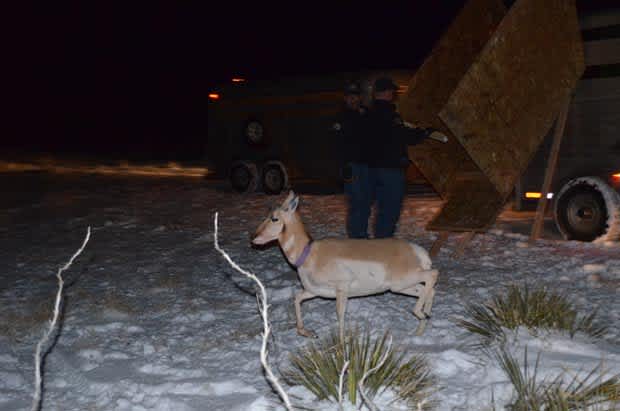Researchers Investigating Stagnant Pronghorn Population in Western Colorado
OutdoorHub Reporters 03.07.12

While research begins into the reason for why the population of pronghorn is stagnant in the southwest corner of the Grand Mesa in Colorado, hunting of the animal in that area is suspended. According to Joe Lewandowski, spokesperson for the Colorado Parks and Wildlife Division, permits to hunt pronghorn in that area have not been issued for the past five years.
“The population couldn’t sustain hunting,” Lewandowski said. “What we’re hoping is that if we can figure out what’s going on with this animal… that eventually we might be hunting [pronghorn] again.” But Lewandowski warns that this is a long-term project and permits may not be issued for at least another five years.
Lewandowski speculates that habitat loss could be a reason why the population is declining in Mesa and Delta counties. “There’s been a lot of development in that area. It might be tough for them to make a living.” The study just began earlier this year in mid-February. Catch the full press release on the study below.
Original press release issued by Colorado Parks and Wildlife on March 7th, 2012
Colorado Parks and Wildlife biologists and managers have started a study in western Colorado to try to determine why the population of a small herd of pronghorns is not growing.
In an area of Delta and Mesa counties, just southwest of the Grand Mesa, is a herd of about 100 pronghorns descended from animals transplanted to the area in the 1970s. During the last 10 years, agency biologists and managers have noticed that groups of the animals are getting smaller and the overall size of the herd is declining.
“Very few fawns are surviving and we don’t know why,” said Brad Banulis, terrestrial biologist for the Montrose area. “We hope that this study will help us figure out what’s going on in this herd.”
Two operations kicked off the research.
On Feb. 19, the agency captured 19 pronghorns from the herd. Radio collars and ear tags were placed on 10 of them, and neck bands and ear tags were placed on the other nine. The collars and bands will allow biologists and managers to track the animals’ movements and to spot them from a distance.
On March 1, 24 pronghorns were captured south of Limon in eastern Colorado and taken to a site near the Delta-Mesa County line where they were released. Nine of the animals were fitted with radio collars and the others received ear tags and neck bands.
All the animals captured also received a vaccine that fends off viruses that cause hemorrhagic diseases in ungulates. The diseases can be fatal to deer and pronghorns.
The transplanted animals will join up with the existing herd, Banulis explained. Their movements will be tracked and Parks and Wildlife employees will be able to determine what habitat they are utilizing, if they are having young and if fawns are surviving.
“This is the first time we’ve done any research on this herd,” Banulis said. “The ability to track these animals will provide us with a lot of valuable information.”
No pronghorn hunting in this herd’s area is allowed currently.
“The trap and release operation went very well,” said Frank McGee, a district wildlife manager in Grand Junction. “The field staff has been working for several years to identify ways to improve this population. Now we have a method that will allow us to figure out what’s going on with these animals.”
Also on March 1, 74 pronghorns were released in the Gunnison Basin to supplement that population.
To learn more about pronghorns in Colorado, see: http://wildlife.state.co.us/WildlifeSpecies/Profiles/Mammals/Pages/Pronghorn.aspx.

